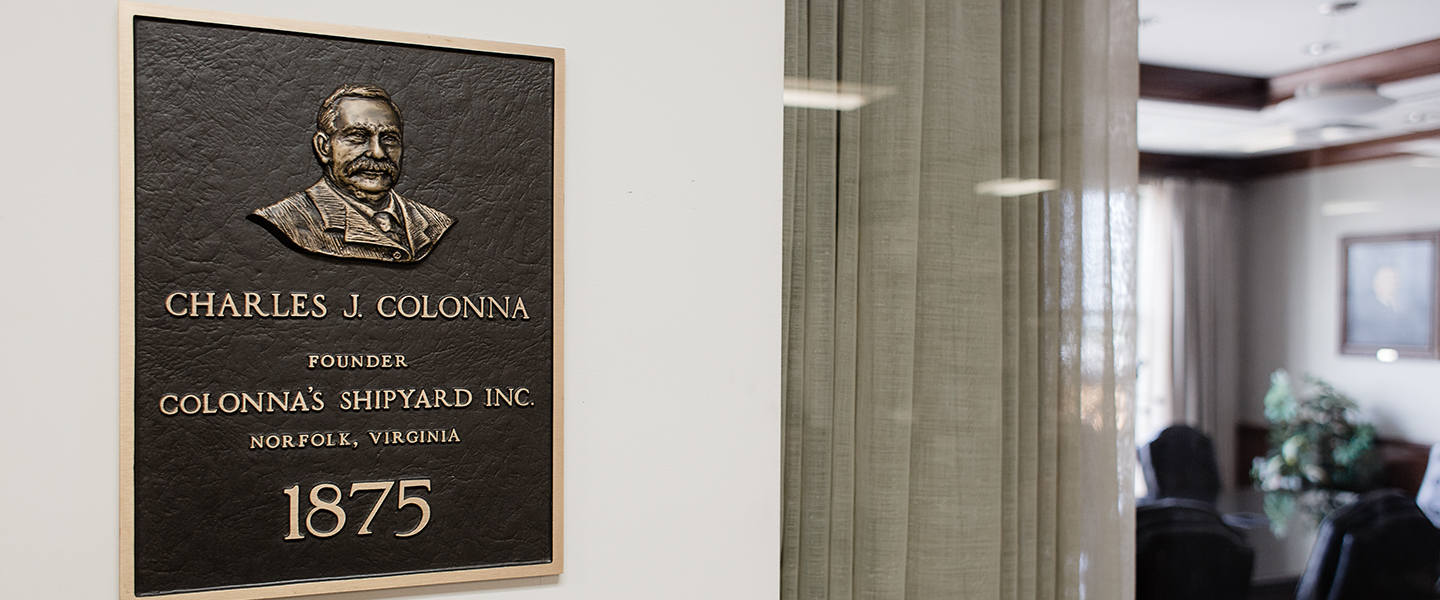In 1875, times were hard and money scarce, but it was an exciting time for 26-year-old ship’s carpenter Charles J. Colonna to start his own business. The port was bustling with vessels in need of repairs, placing him in the heart of a thriving seaport with every opportunity to succeed through hard work. With a $2,000 loan from his brother, he established his shipyard on the principles of hard work, good value, and fair dealings—values that would define the company for generations to come.
Mr. Colonna had a few advantages on his side. His marine railway had a 50-ton lifting capacity, and nearby sawmills provided an abundant supply of sawn lumber in all sizes and types. Norfolk’s harbor was a hub of commerce, where water transportation served as the primary means of moving goods, from the heaviest cargo to the smallest farm produce. Water taxis shuttled people between points, and on clear days, the harbor appeared as a field of white butterflies, with countless sail-powered vessels navigating its waters.
Practically all the ships were wooden, including fish trawlers, oyster boats, barges, and bogies, requiring constant maintenance and skilled craftsmanship. Ship carpenters, riggers, sailmakers, caulkers, painters, and blacksmiths worked tirelessly to keep them seaworthy. Colonna’s shipyard was strategically located on the south bank of the Eastern Branch of the Elizabeth River, about a mile east of its confluence with the Southern Branch. At the time, it sat at the north end of Main Street, where the road met the water’s edge—long before a bridge connected the area. The yard was across the street from the old Herbert home in what is now Berkley, diagonally across the river from downtown Norfolk.
As Norfolk grew, so did Colonna’s shipyard. When bridges and streetcar tracks were added decades later, the area became part of the City of Norfolk through annexation in 1906. From its humble beginnings, Colonna’s Shipyard laid the foundation for what would become a lasting legacy in the maritime industry.
Online Publications
CSI History Timeline
- 1875 Colonna’s Shipyard, established by Charles J. Colonna. His original policy was “hard work, good value, and fair dealing.”
- 1890 – Railway #3 Installed. Still in service today, it continues to serve the regional commercial maritime market including barges and fishing vessels.
- Early 1900s – Horse-drawn marine railways were retired; power was obtained from steam engines and later graduated to electric motorized chains and gears.
- 1917 Norfolk Lighterage Company began trading as is known today – Norfolk Barge Company.
- 1920 – The Inside Machine Shop, still in operation today, was built. When completed, it was considered one of the largest and best on the east coast.
- 1920 – Installation of #4 Marine Railway. Retired in 2014 – it was the largest marine railway on the east coast at that time.
- 1954 – Benjamin Okeson Colonna becomes the third president of Colonna’s Shipyard, carrying on an already proud legacy.
- 1977 – Willoughby Warren “Bill” Colonna, Jr. becomes principal owner of Colonna’s Shipyard as its fifth president and CEO. Under his management, the number of employees would quadruple, and the annual income would increase sevenfold, due to an increased amount of government work.
- 1987 – “The Captain Will,” Colonna’s Shipyard’s first Floating Drydock installed.
- 2000 – Founding of Steel America, a division of Colonna’s Shipyard, Inc. Specializing in heavy machining, fabrication and repair, Steel America supports ship repair, maintenance and overhaul markets.
- Early 2000’s Bill III – Colonna’s second Drydock is installed.
- 2009 – Colonna’s executed a $20 million yard expansion and purchase of the Travelift with an impressive lifting capacity of 1,000 metric tons.
- 2015 – Colonna’s Shipyard West was founded, expanding the enterprise to San Diego, CA.
- 2016 – “The Charles J. Colonna”. Colonna’s installed it’s third Floating Drydock.
- 2020 – Weld America was founded, supplying 24/7 on-site welding services.
- 2023 – Colonna’s acquired Accurity Industrial Contractors, located in Owensboro, KY.
- 2025 – Colonna’s Shipyard, Inc. celebrates it’s 150 Year Anniversary providing an opportunity to honor the vision and hard work of all those who have played their part in its long and successful history.

